Roman Archeology Exam 2
1/74
There's no tags or description
Looks like no tags are added yet.
Name | Mastery | Learn | Test | Matching | Spaced |
|---|
No study sessions yet.
75 Terms
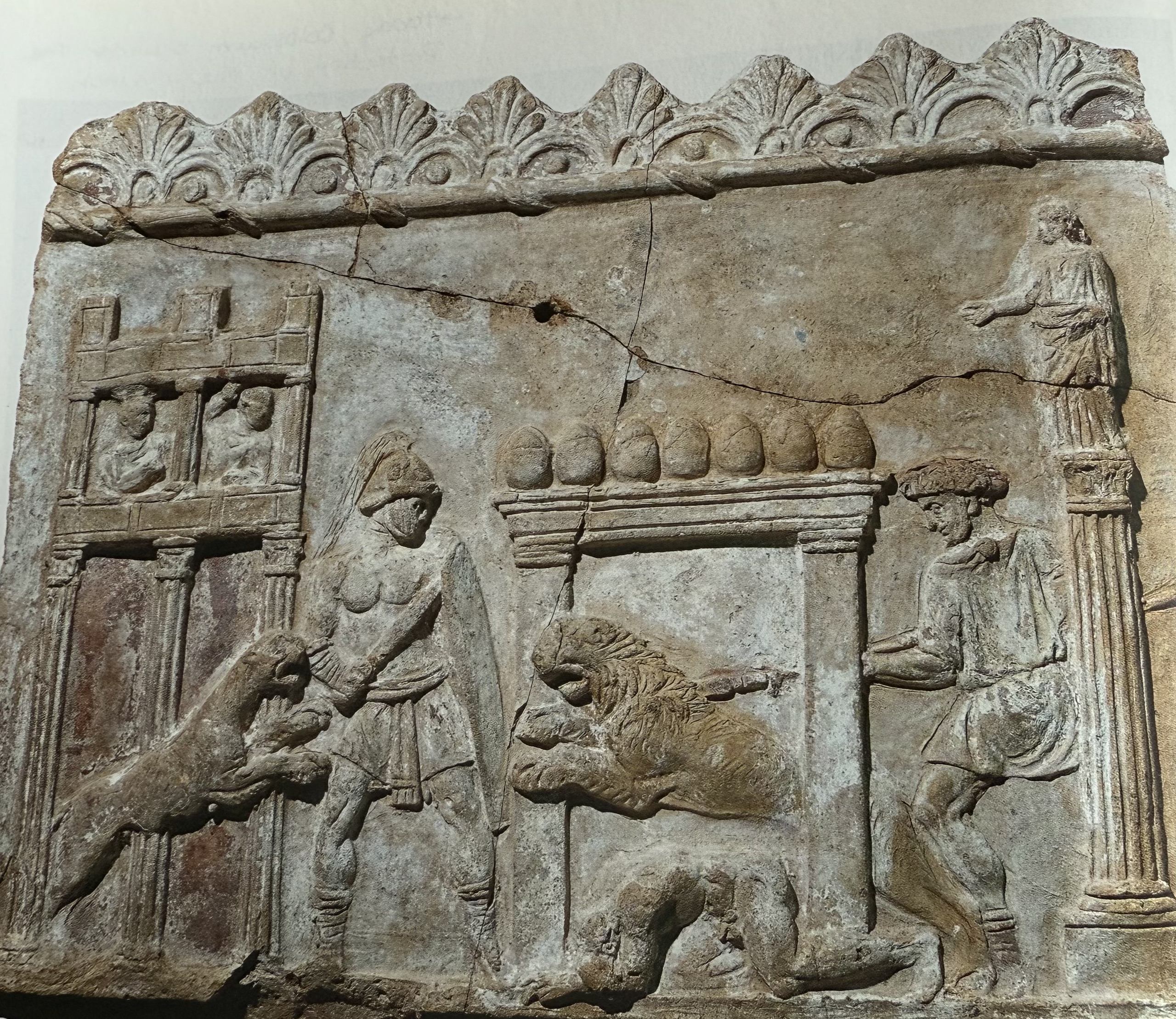
Campana relief with gladiators. An example of contests taking place at Colosseum. Allows us to see types of entertainment that was important to Romans.
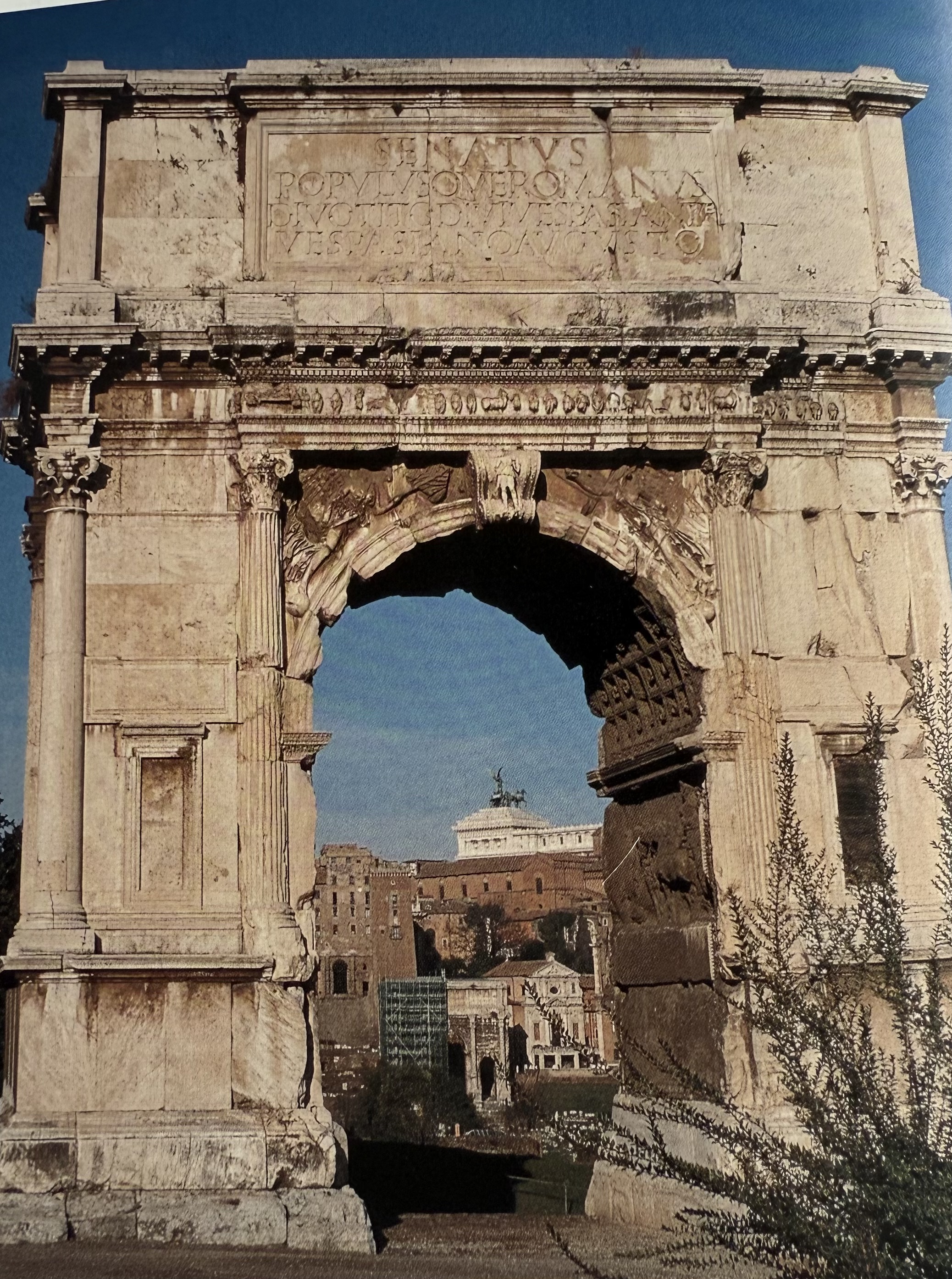
The Arch of Titus. Erected to celebrate his victory in the Jewish wars. Dynastic as it ties to the past emperors.
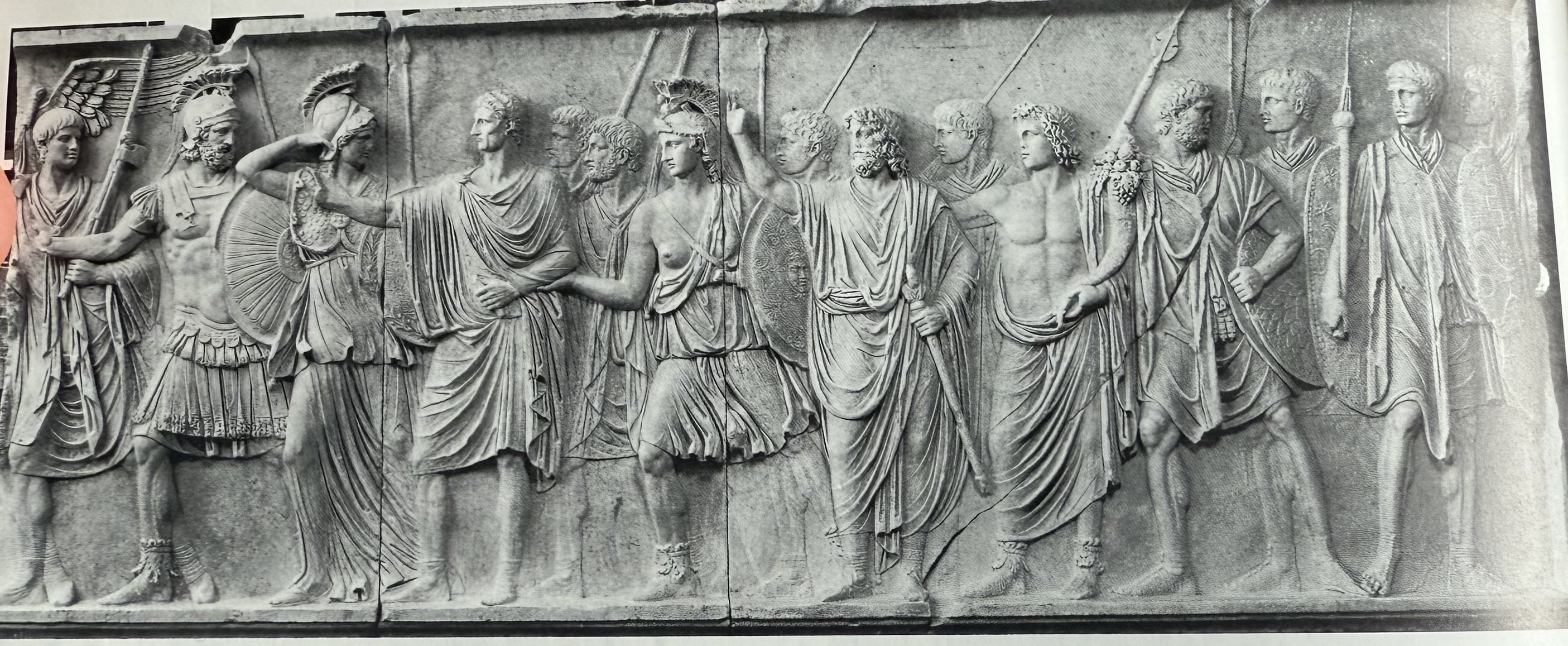
Domitian setting out, relief from Cancelleria. Domitian going on a military tour, accompanied by Roma and Minerva, genius of senate and roman people. Domitian faced damnatio memoraie.

Portrait of Flavian Woman. Typical complicated hairstyle worn by women. Shown youthful.
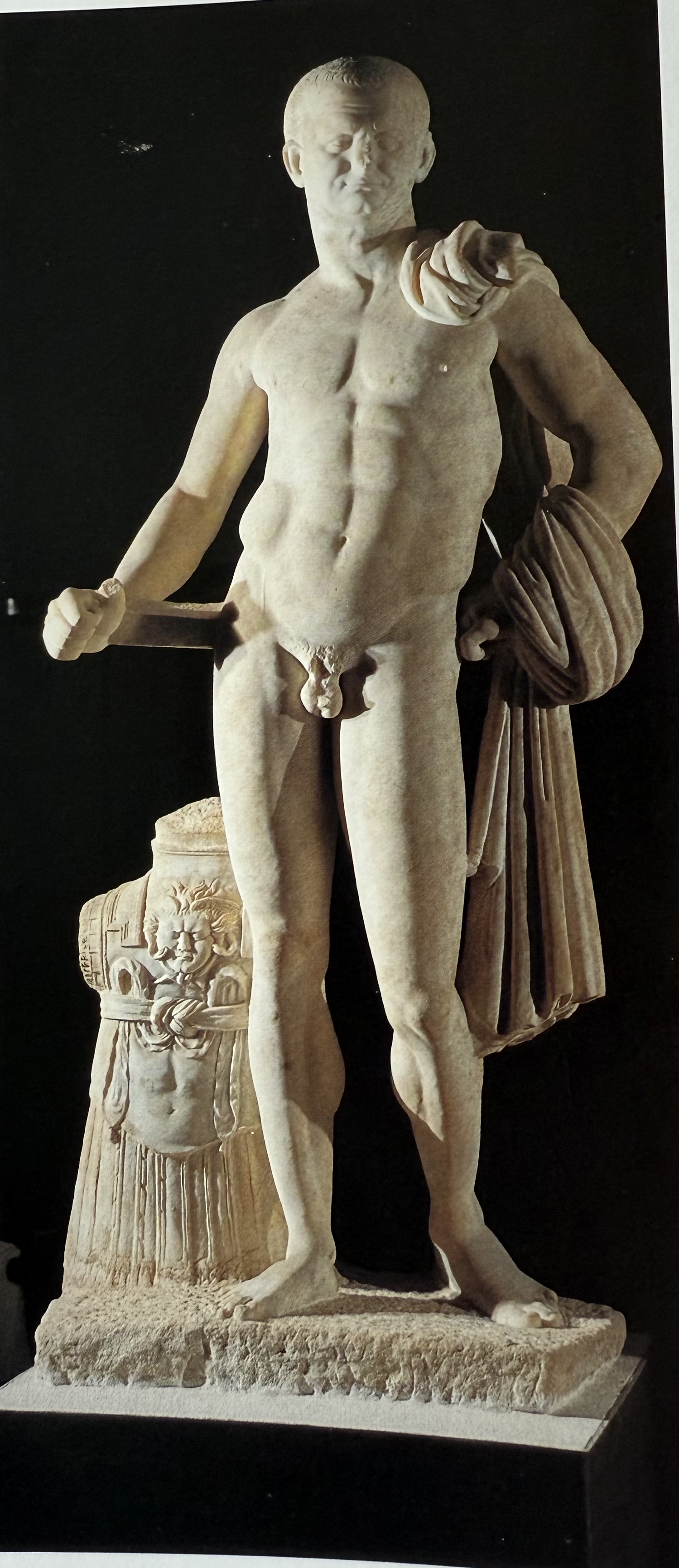
Heroic figure of Titus. Part of shrine to imperial cult. Veristic head with youthful body. Romans worshipped emperors as if they were divine.
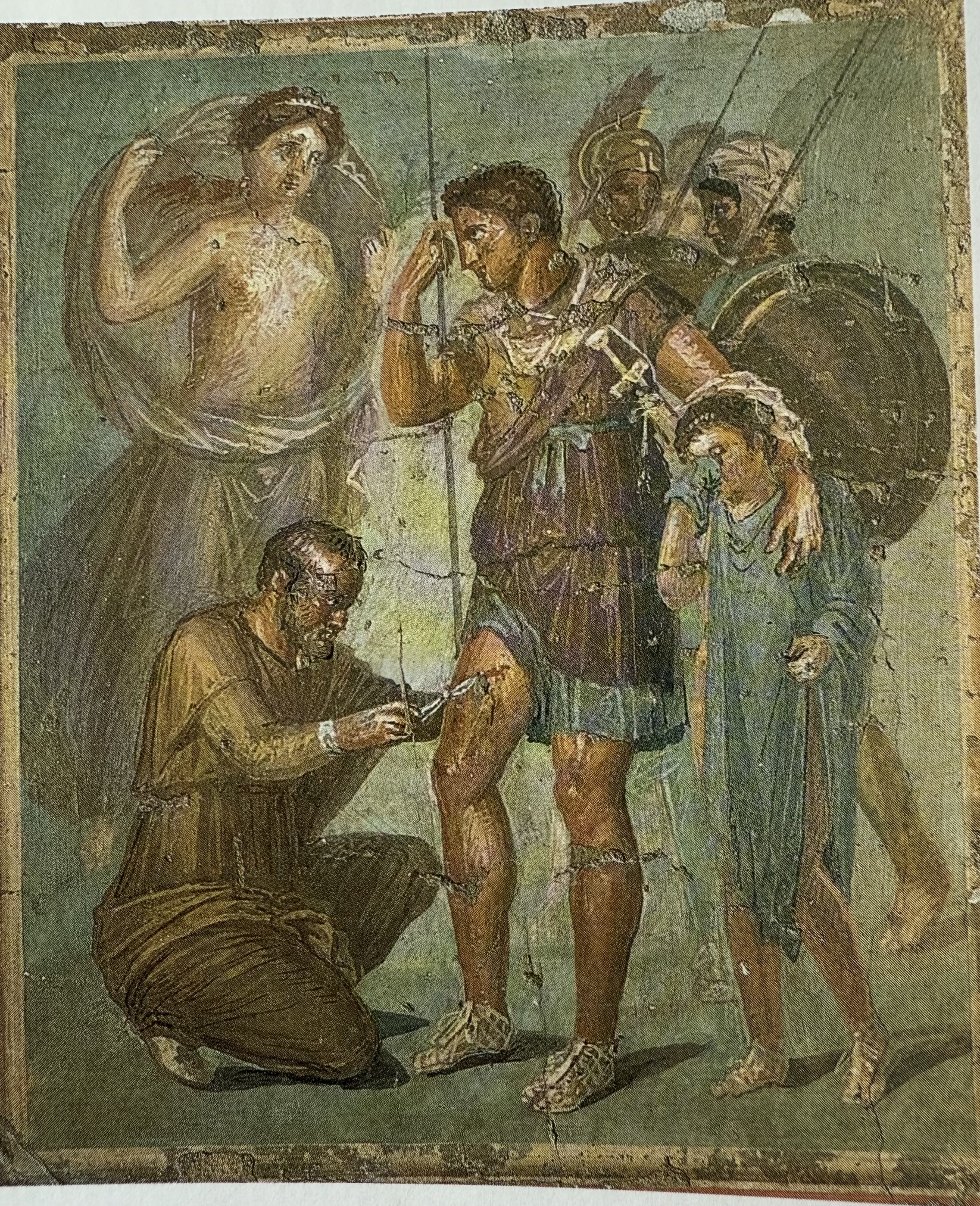
Healing of the wounded Aeneas. Found in house in Pompeii. Showcases an interest in Greek mythology amongst those at Pompeii.
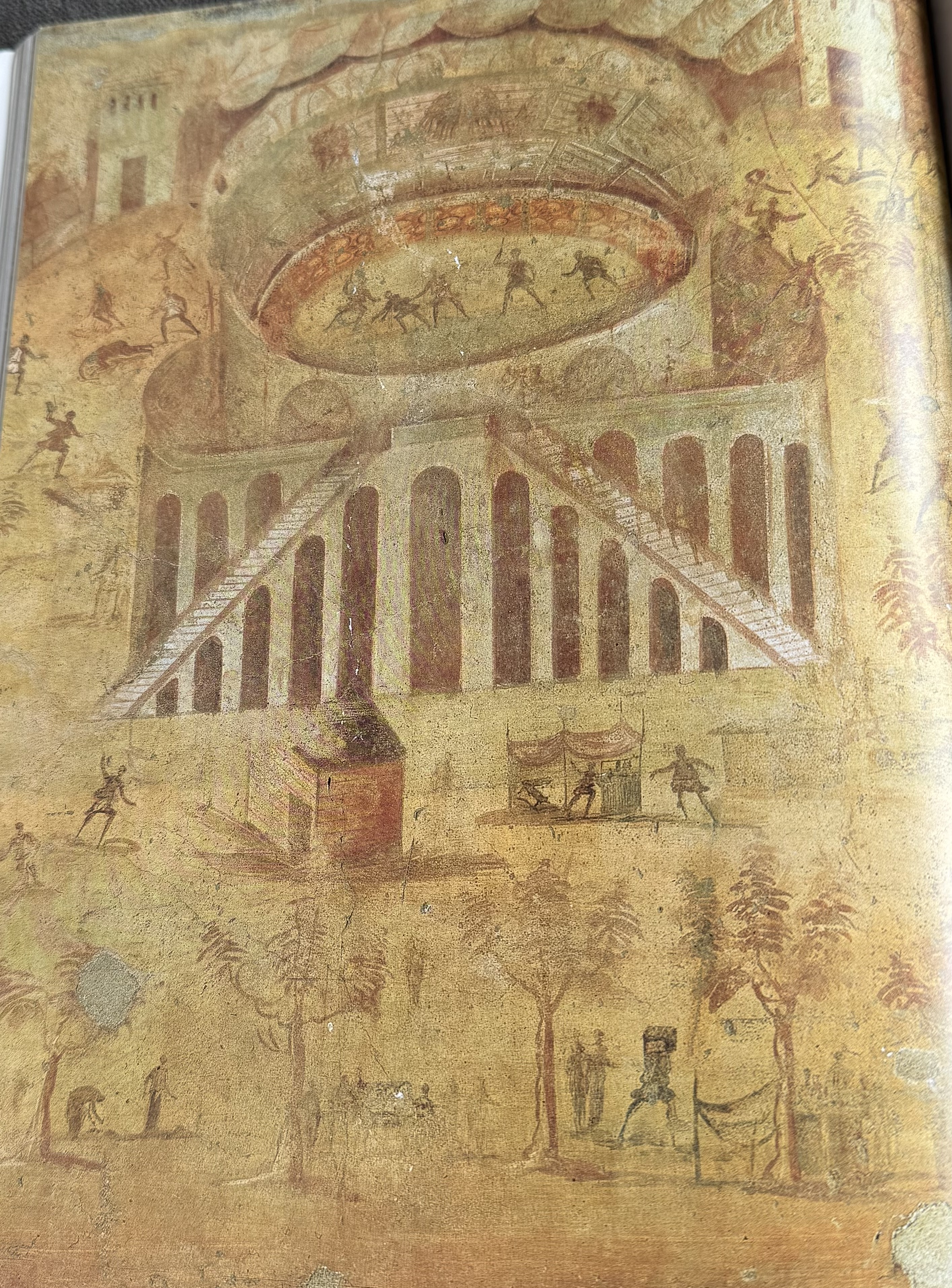
Riot at Pompeii Amphitheater. Provides a historical narrative, which we rarely get from Pompeii.
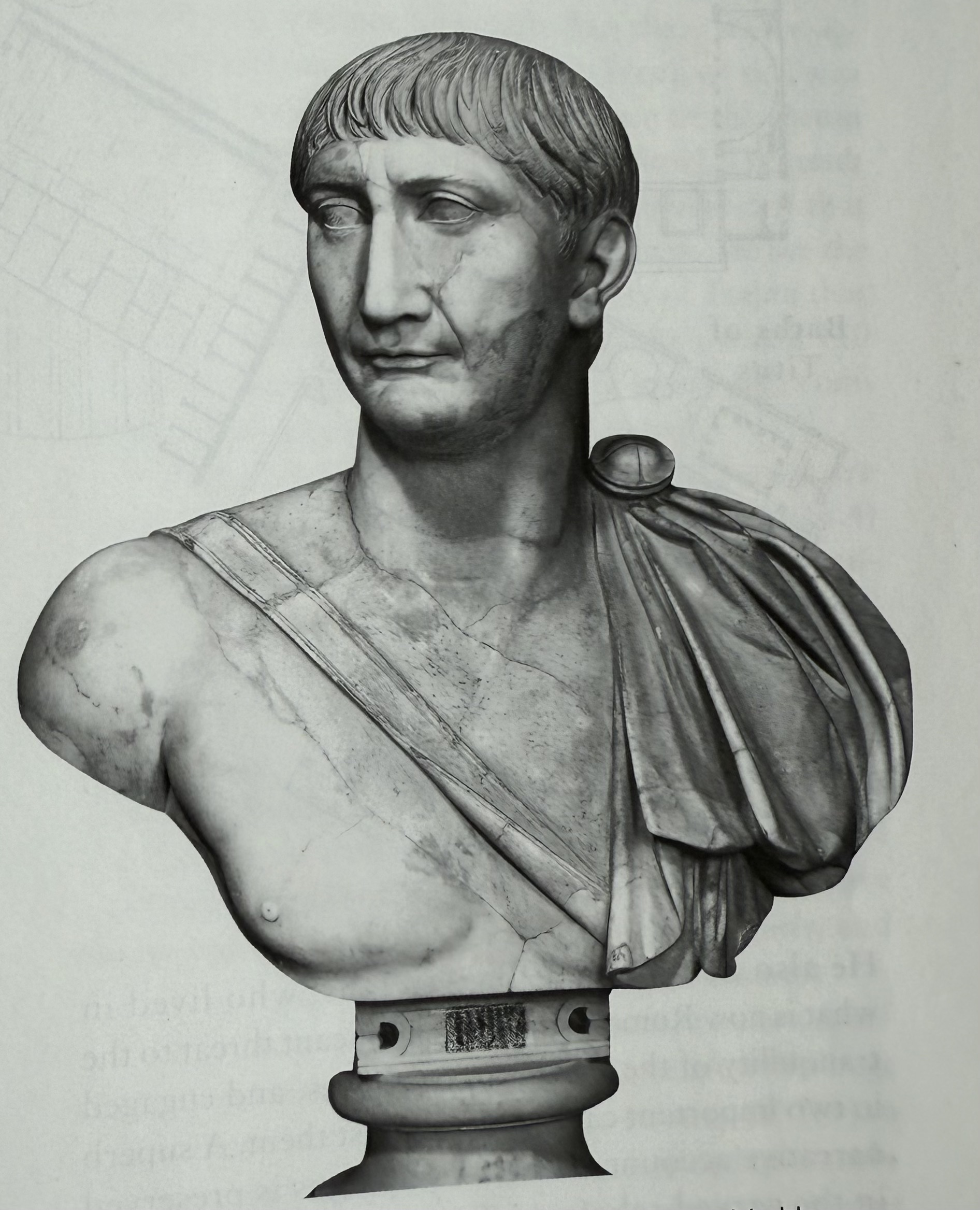
Bust of Trajan. Easy to identify as many portraits survive and they all look the same.
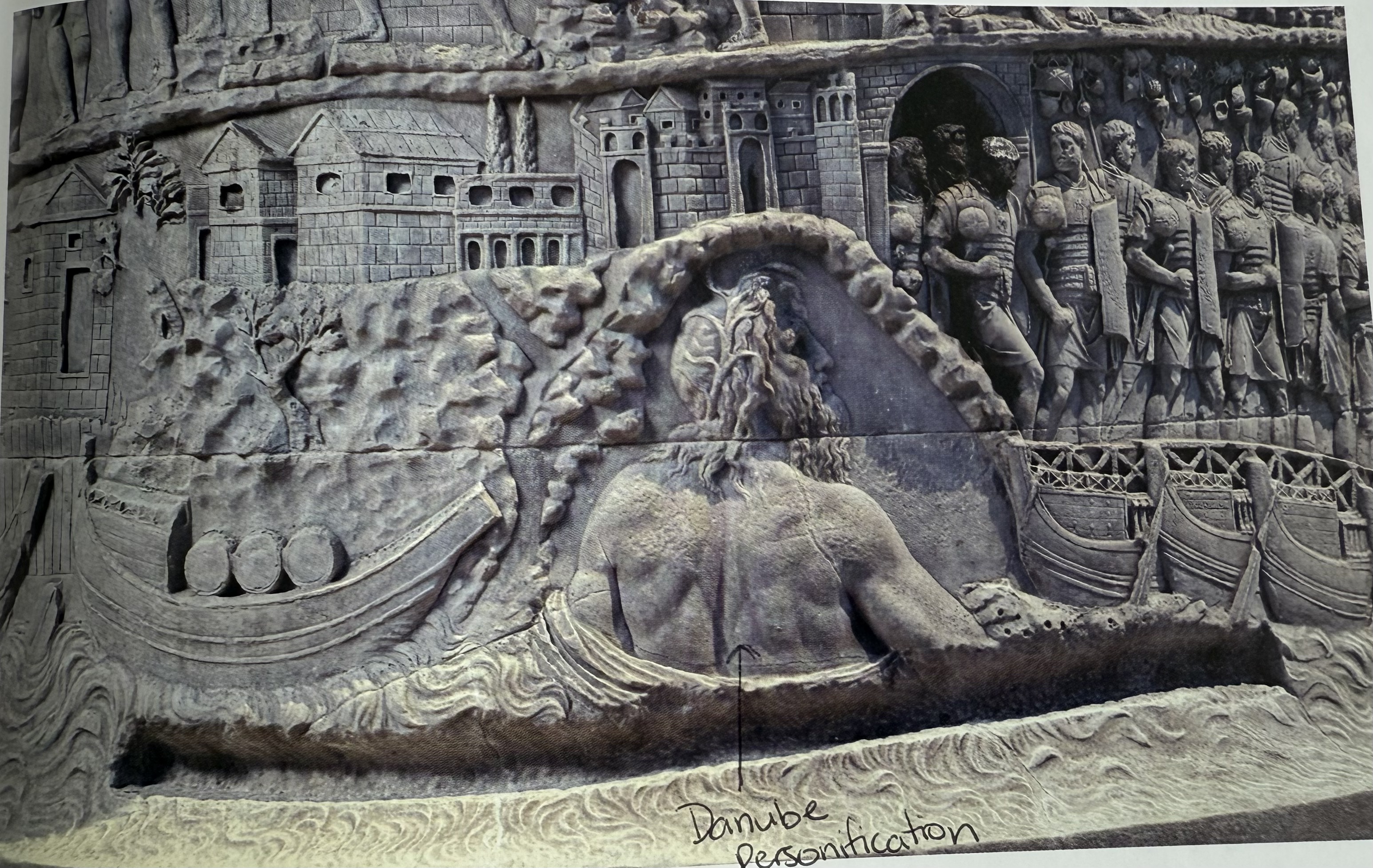
Danube River god personification on Column of Trajan.

Testudo Formation of Roman Army on Column of Trajan. Gives historical perspective how how roman army functioned (dress, battle formations, etc.)
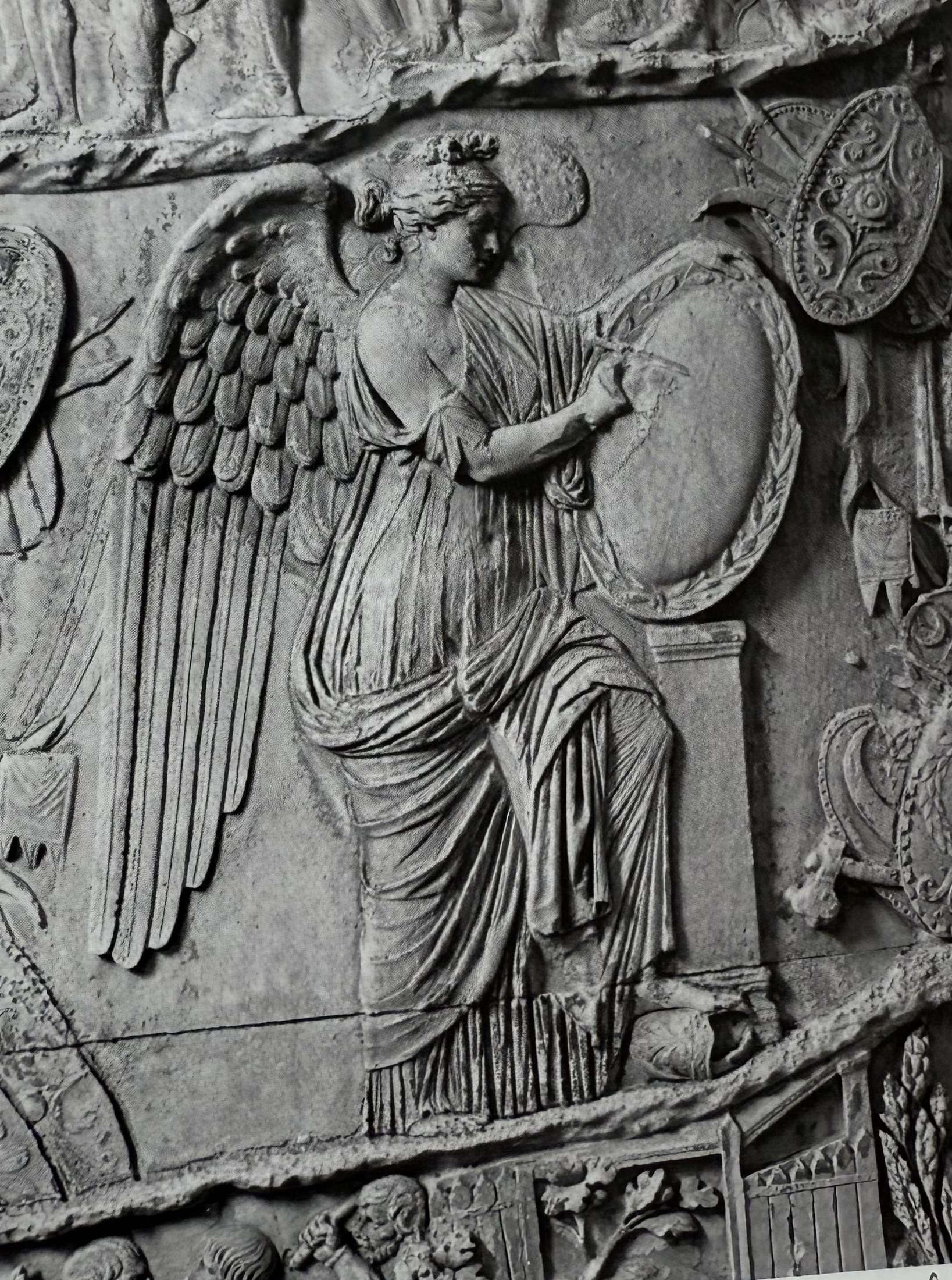
Victory writing on a shield on the column of Trajan. Inscribing shield with virtues of Trajan. Halfway up the column (separating the stories of the 2 different battles).
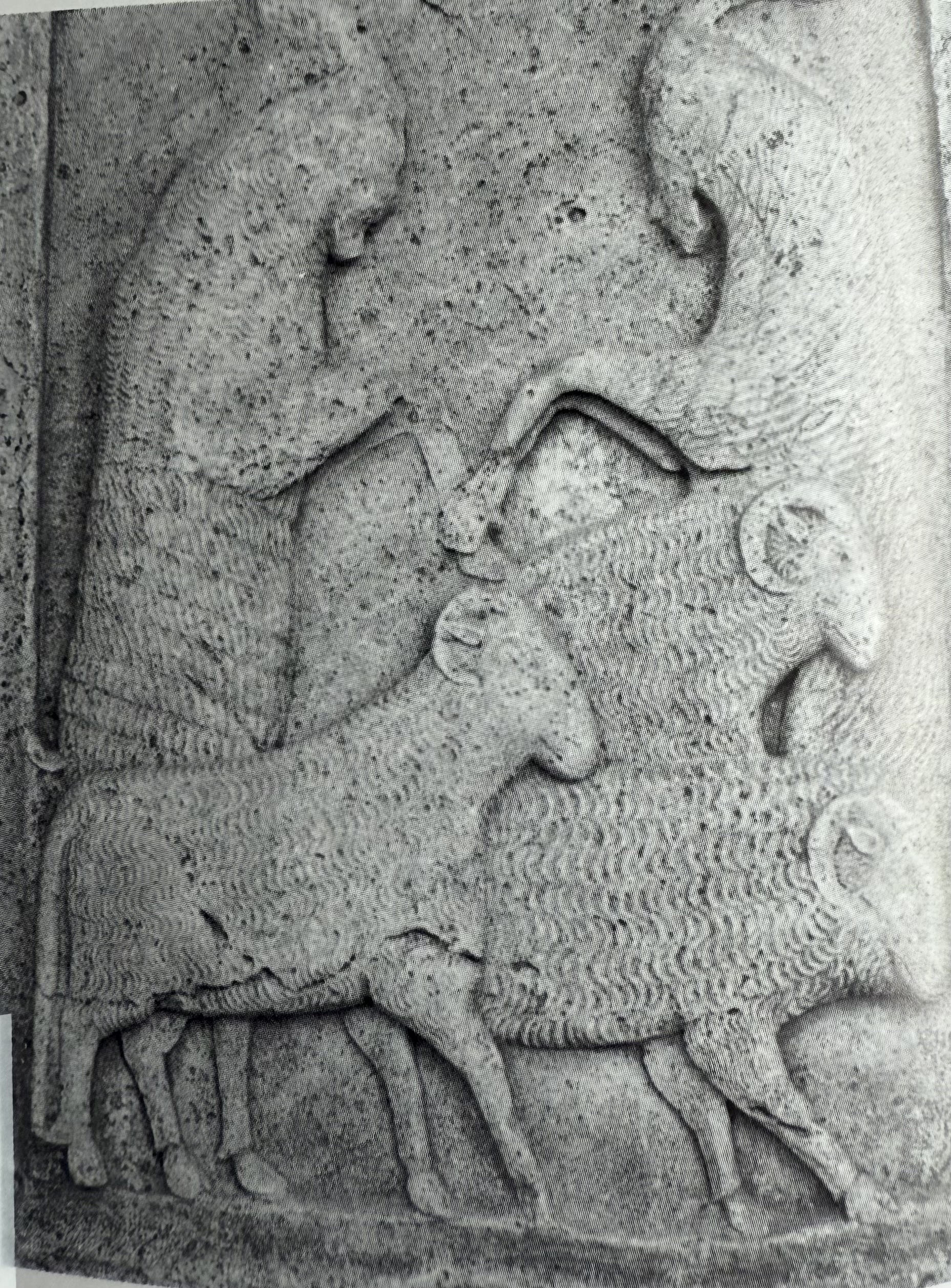
Sheep and goats on Tropaeum Traiani (Adamklissi). Built in Dacian lands to celebrate Trajans victory. Likely carved by local Dacians in service of Rome. Rudamentary.
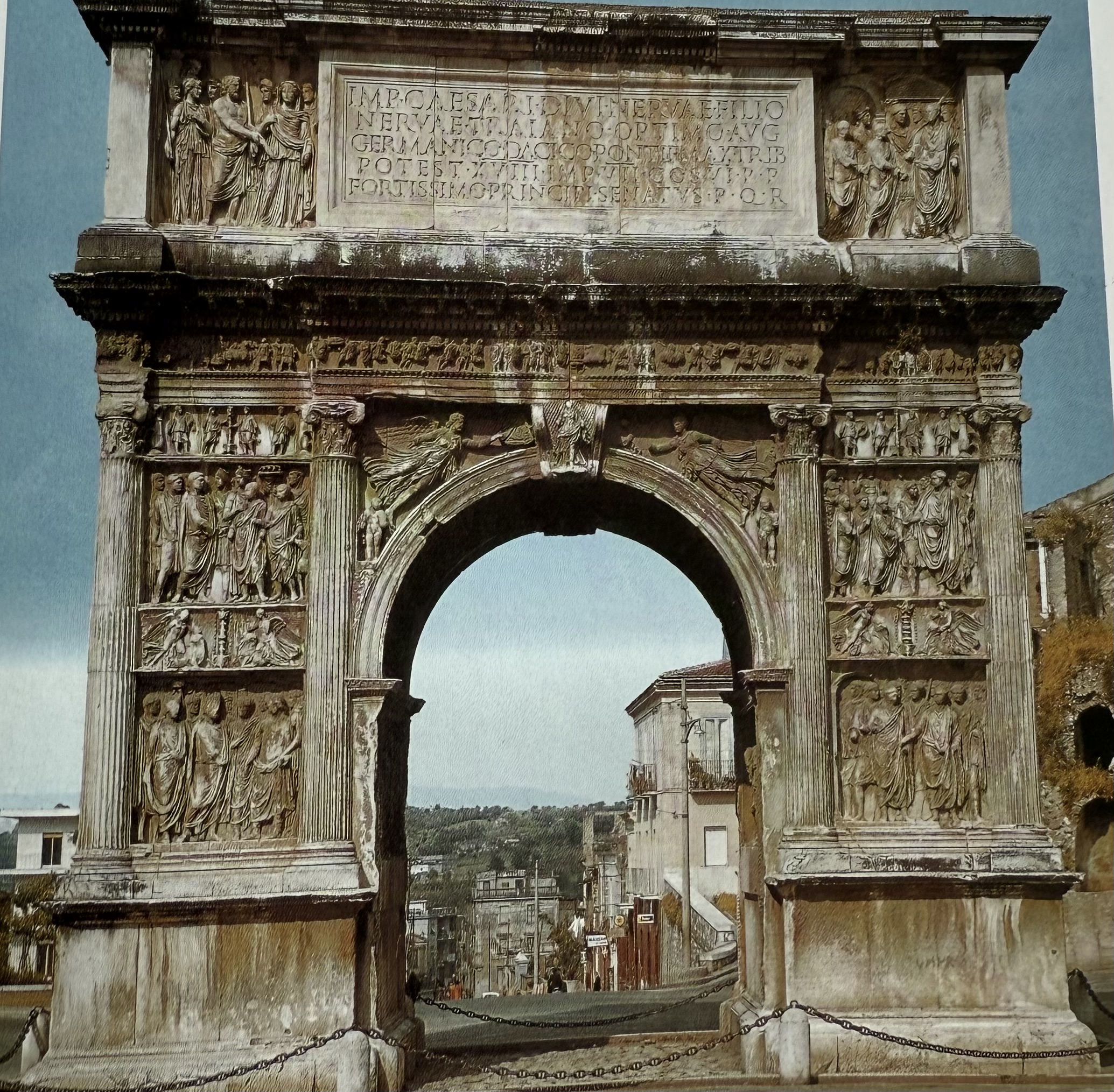
Arch of Trajan Benevento. Commemorative Arch full of iconography of the divine. Capitoline triad and other roman gods featured, interacting with Trajan.
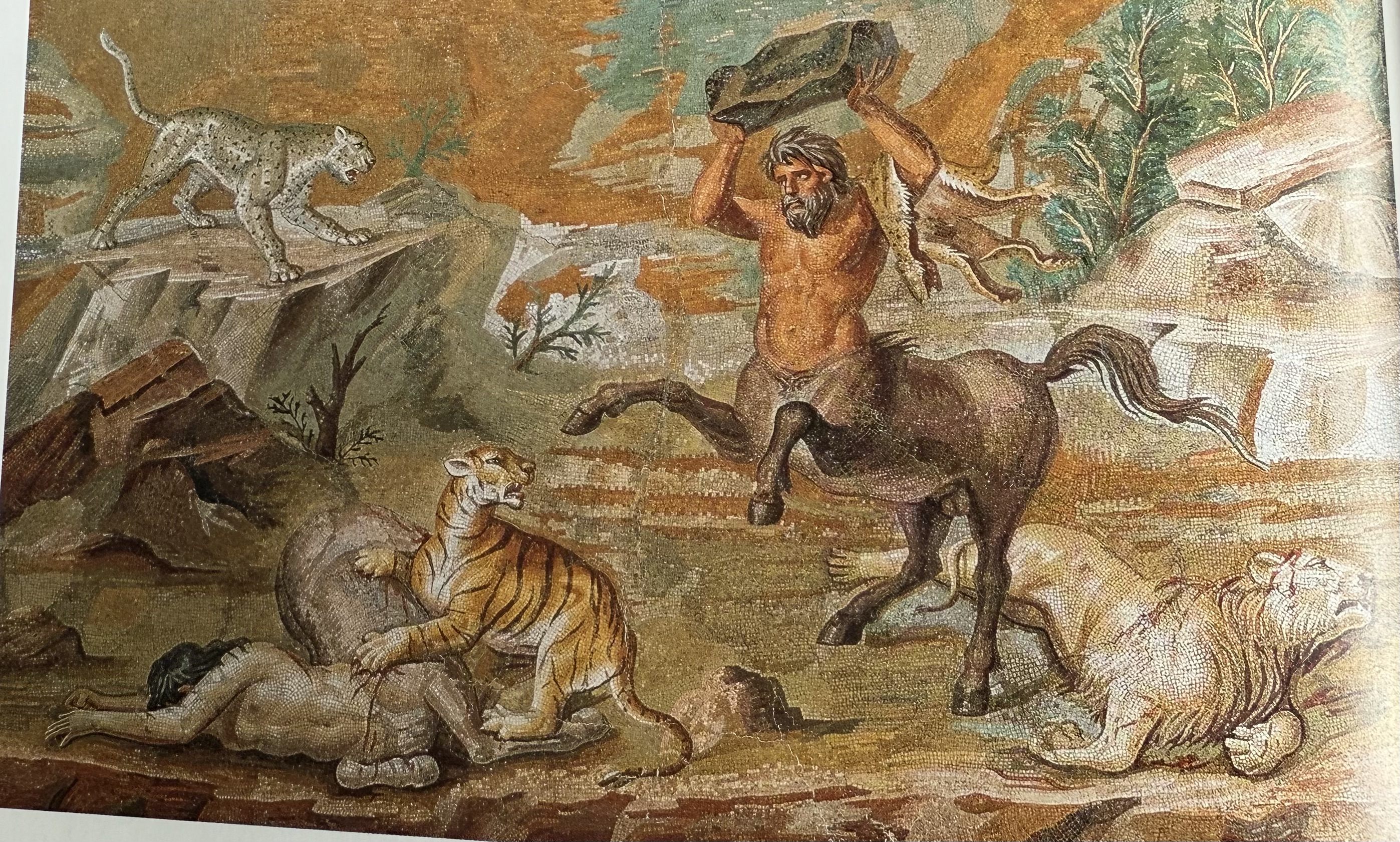
Battle of Centaurs and Wild Beasts at Hadrians villa. Showcases his interest in Greek culture and stories. Sympathy for the centaur(s).
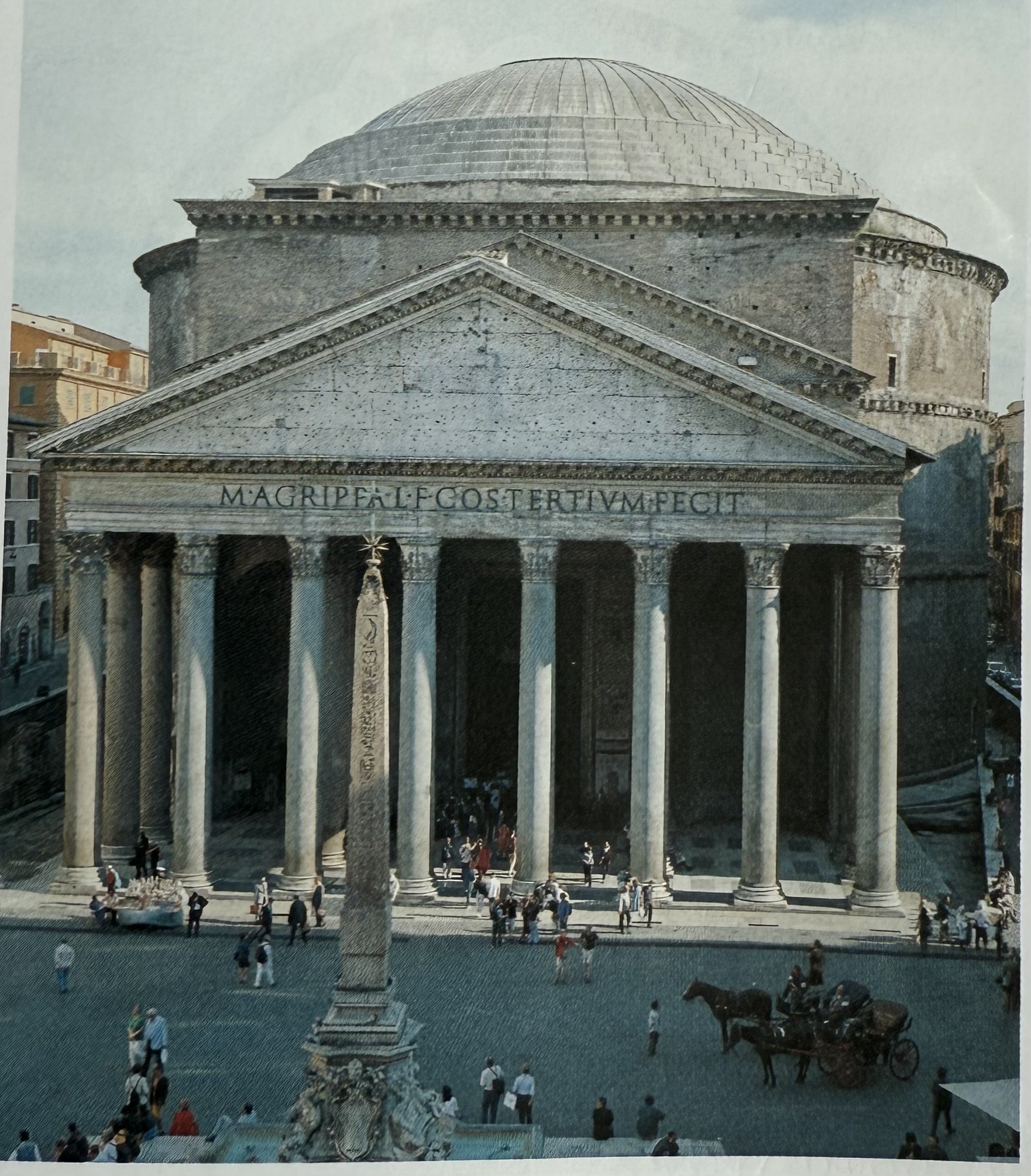
Pantheon. Temple to all the gods. Dedicated to Agrippa (Hadrian did not put his own name on the temple). Largest domed monument in Roman Imperial Architecture.
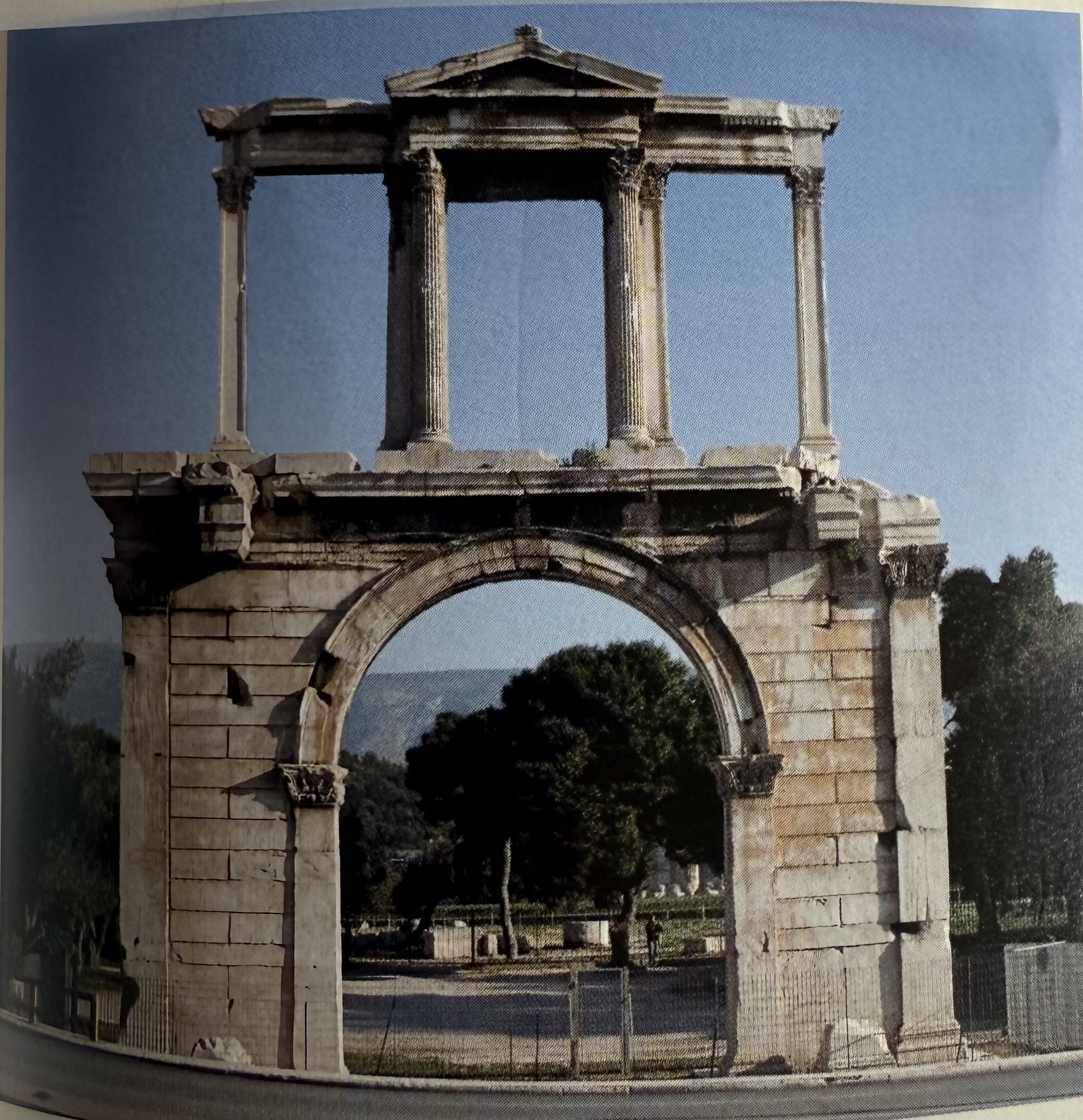
Hadrians Arch. Commemorative arch located in the provinces. Communicates ideas of roman conquest and roman identity. Ideal setting for group portraits and therefore is likely dynastic.
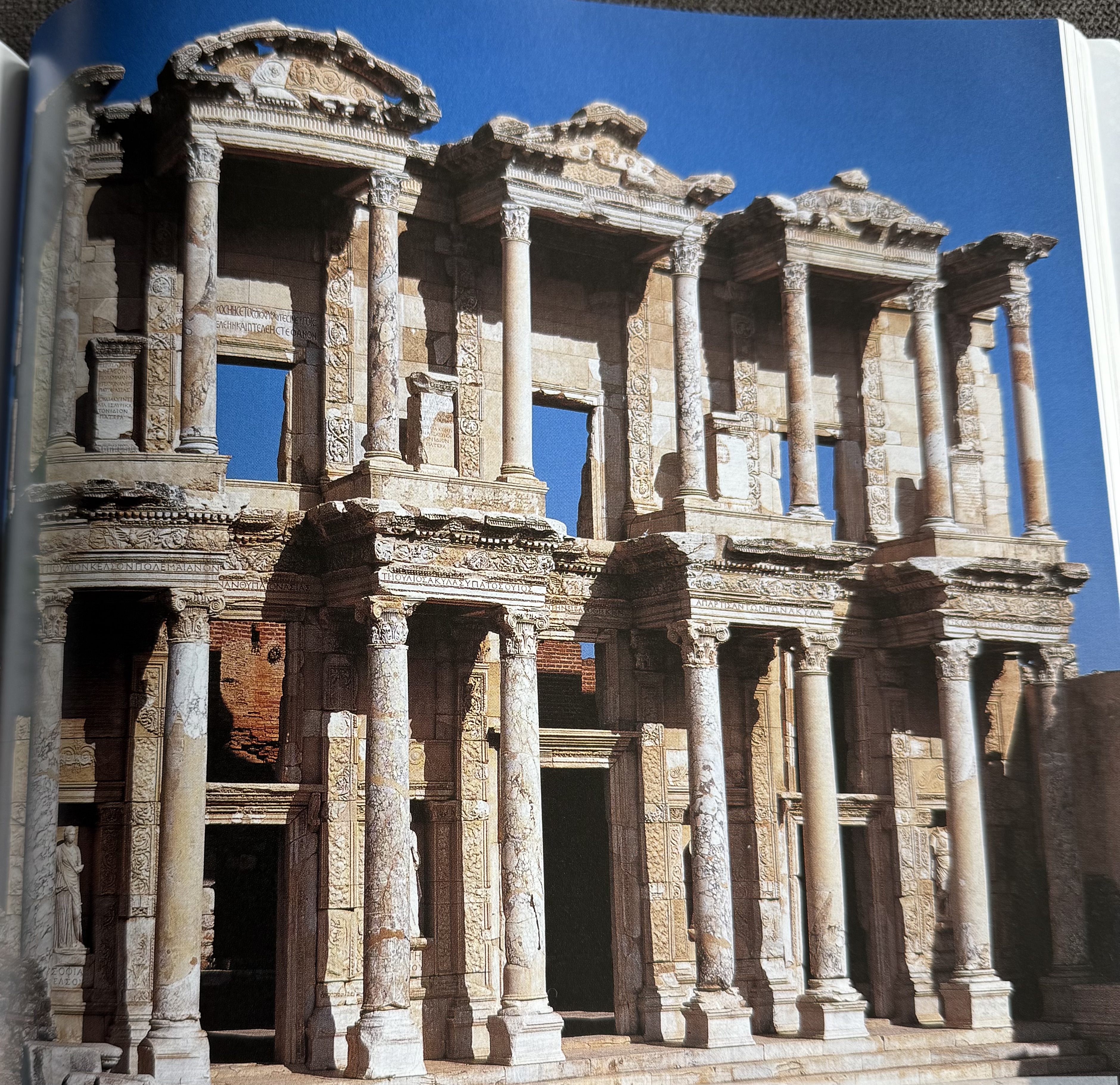
Library of Celsus. aediculated columnar facade, which was common in the provinces. Anastylosis (reconstructed).
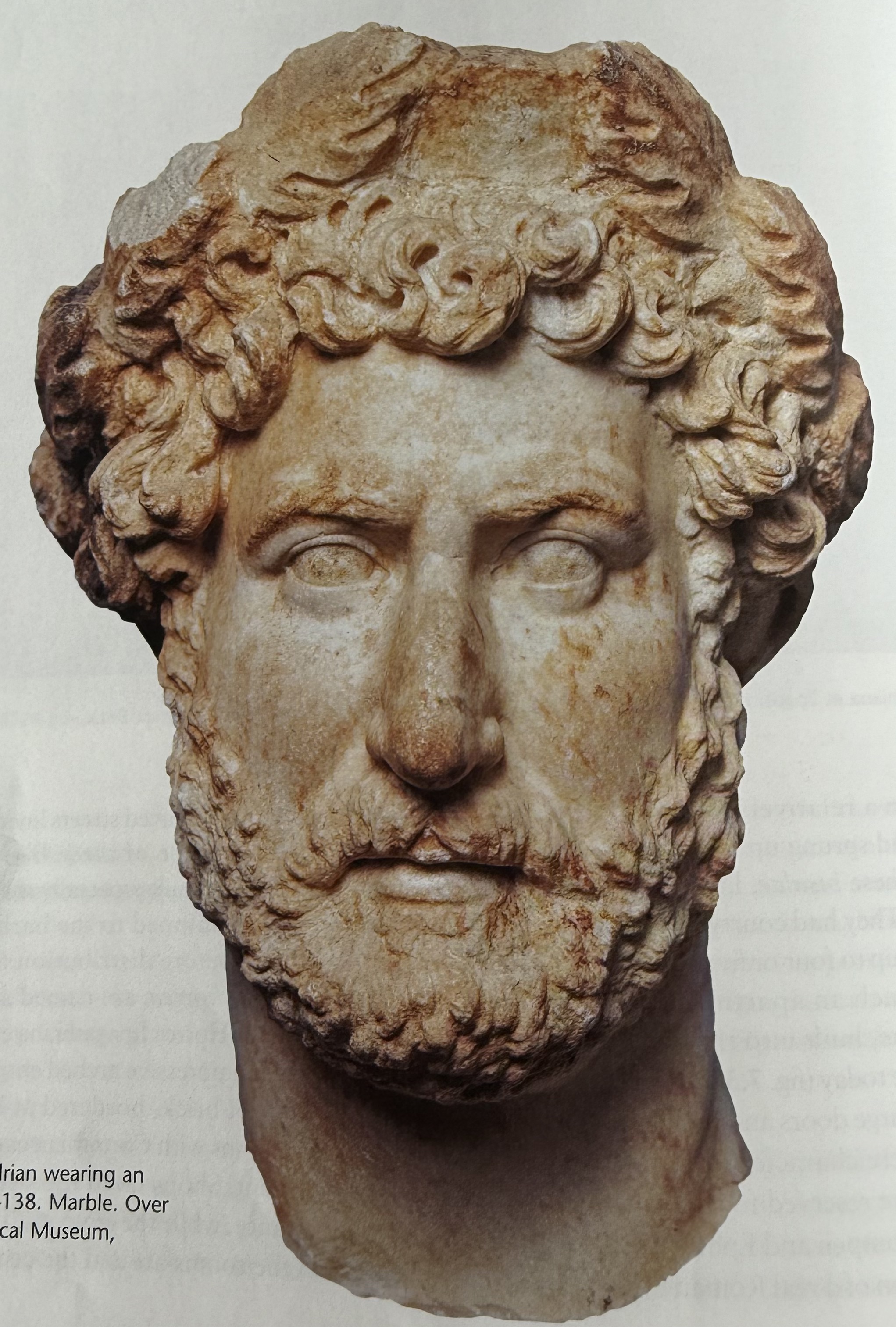
Portrait of Hadrian wearing Oak wreath. Popularizing the beard (maybe wanting to look more like greek heroes).
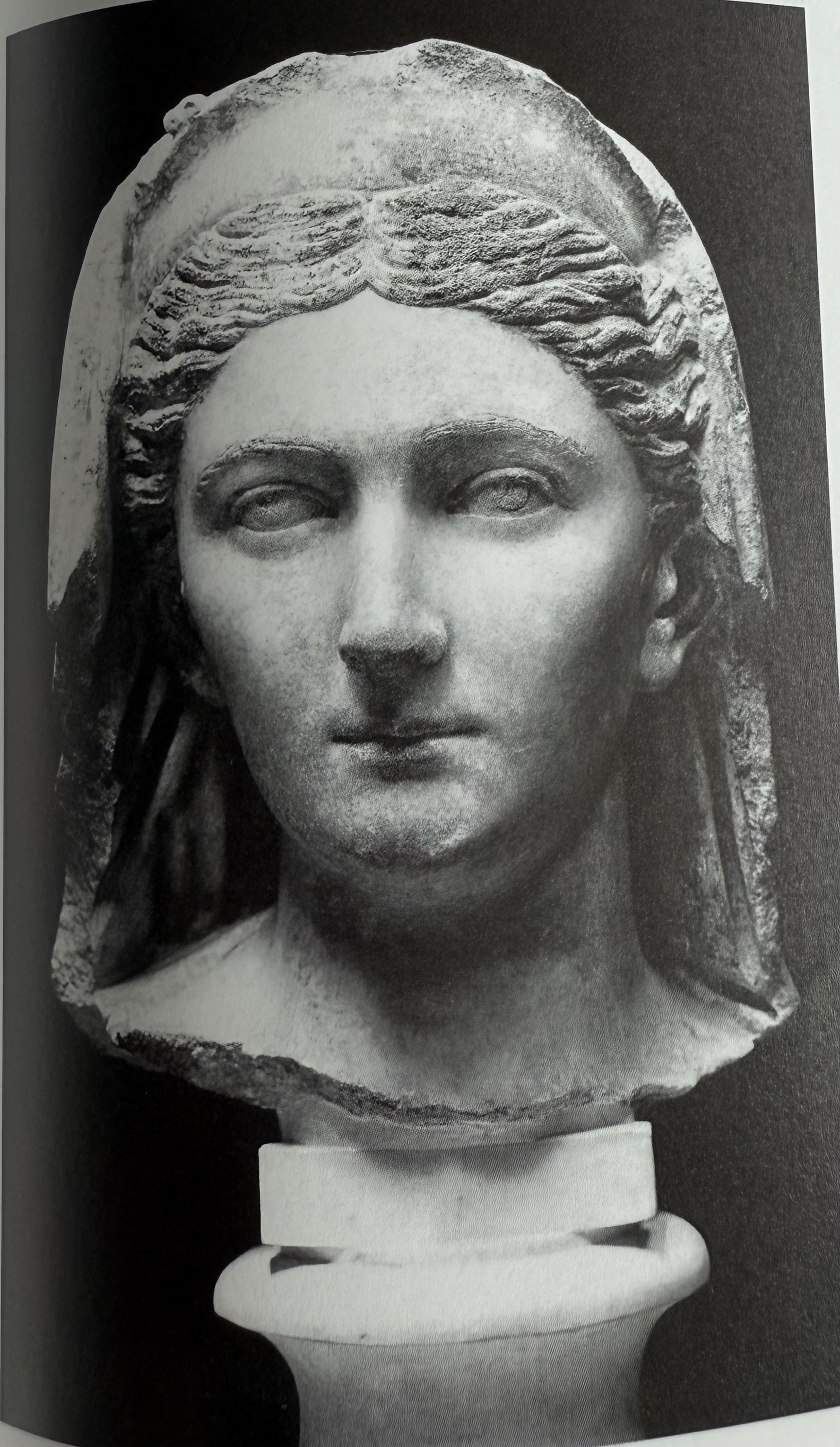
Portrait of Sabina. Wife of Hadrian.
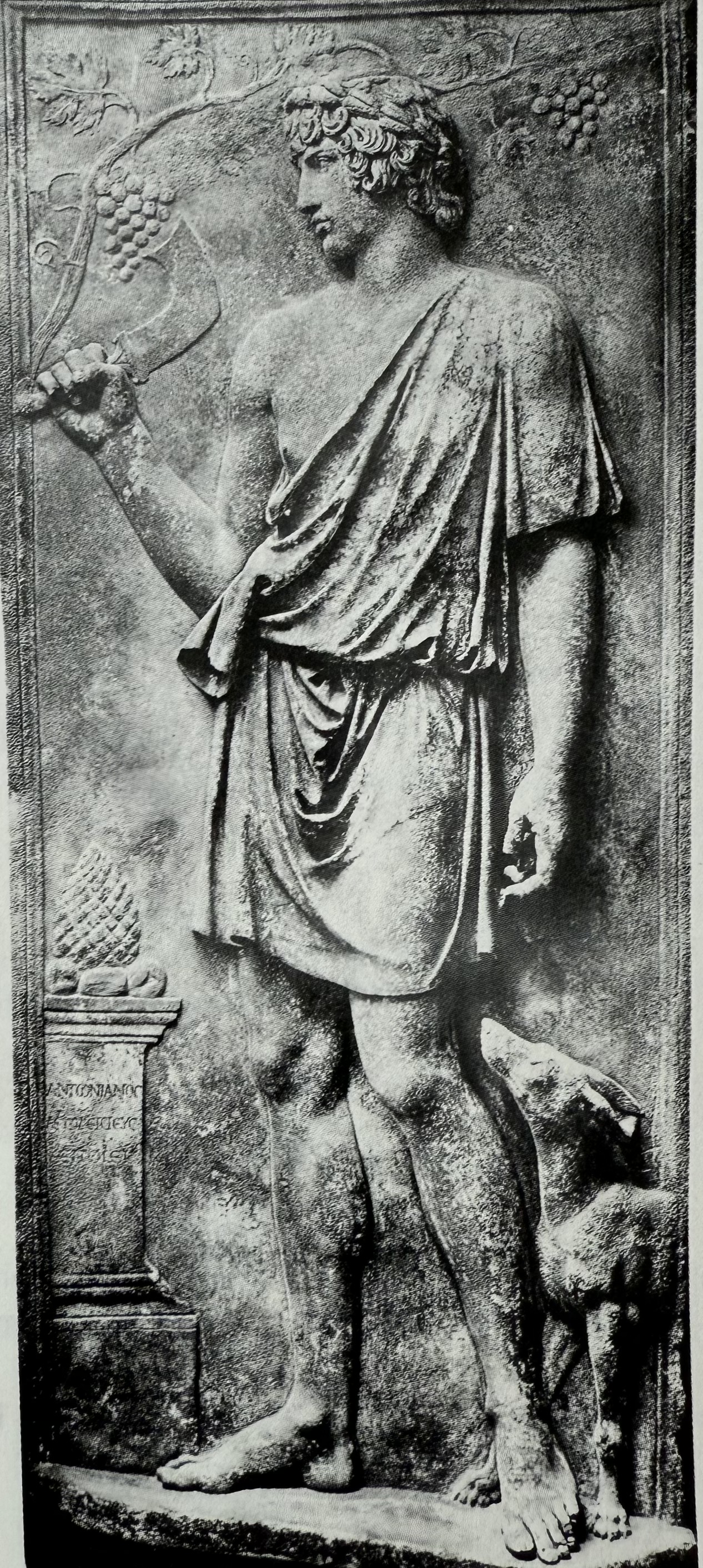
Antinous as Sylvanus. Hadrians lover. Was deified after he died.

A boar Hunt. Hadrianic relief reused on arch of Constantine. Symbolize emperors virtues, courage, strength, pietas. Similar to scenes found on Ara Pacis Augustae.
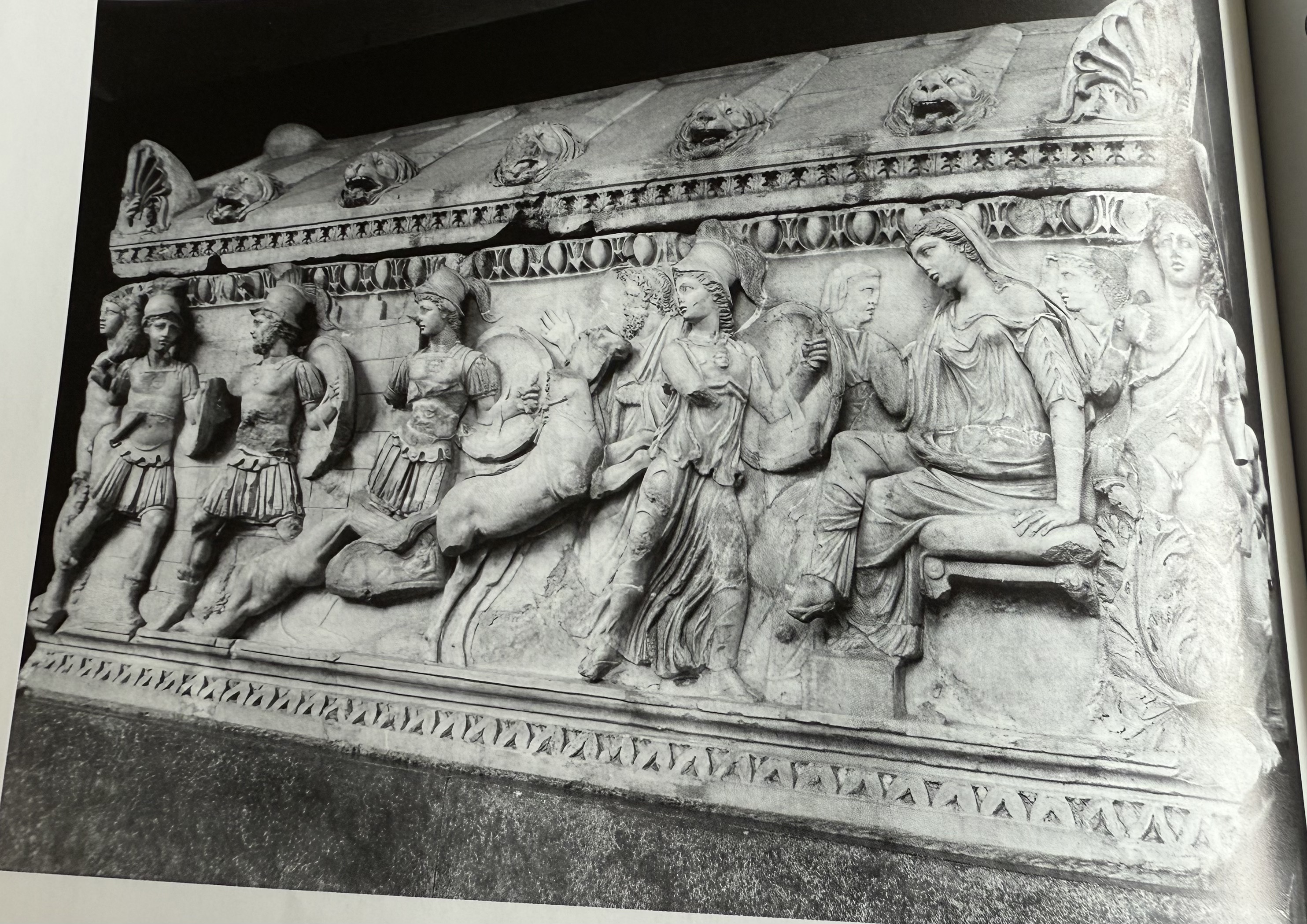
Dragging of Hector behind the walls of Troy. Found on a Attic type Sarcophagus. Troy was a popular tale found on sarcophagi. Was this for a mourning wife, or a solider?
Male painted portrait on wood.
Painted funeral portrait from Fayum. Depicts what the deceased would have looked like.
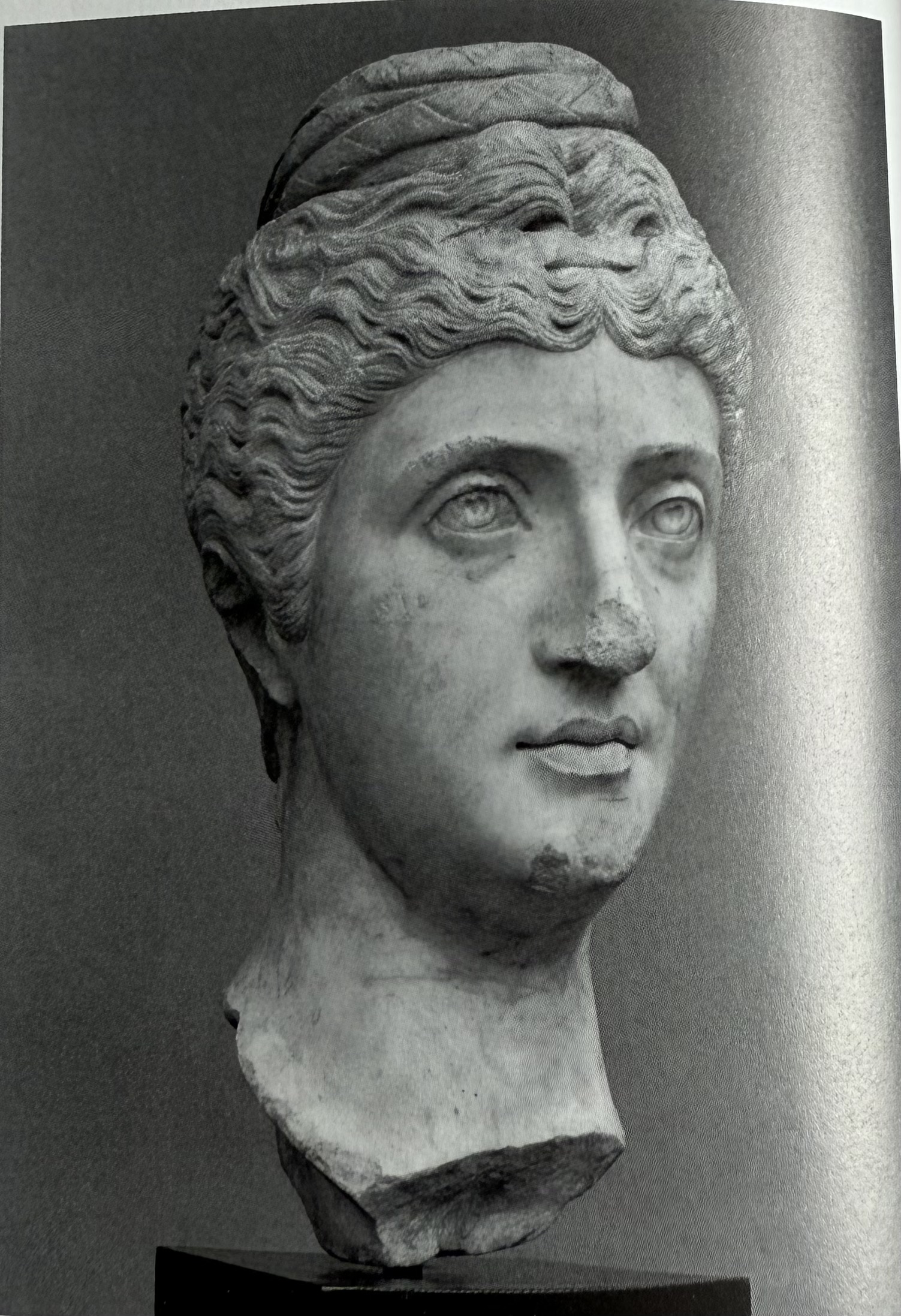
Portrait of Faustina the Elder. Wife of Antoninus. Typical hairstyle. After her death, she was honored with a temple in the forum and her face was placed on coins throughout the empire.
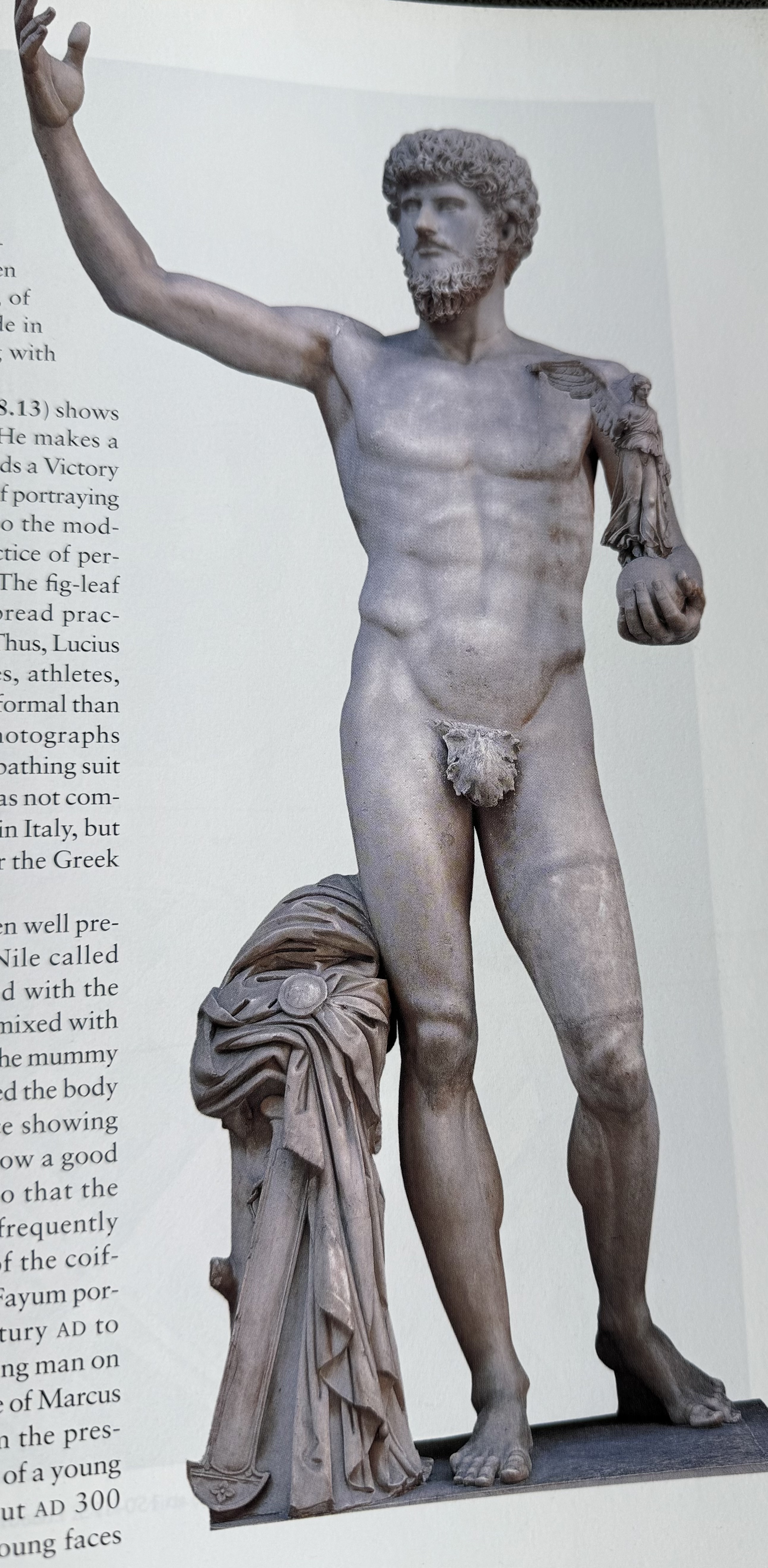
Nude portrait of Lucius Verus. Shown in the tradition of heroes, athletes, and hellenistic kings.
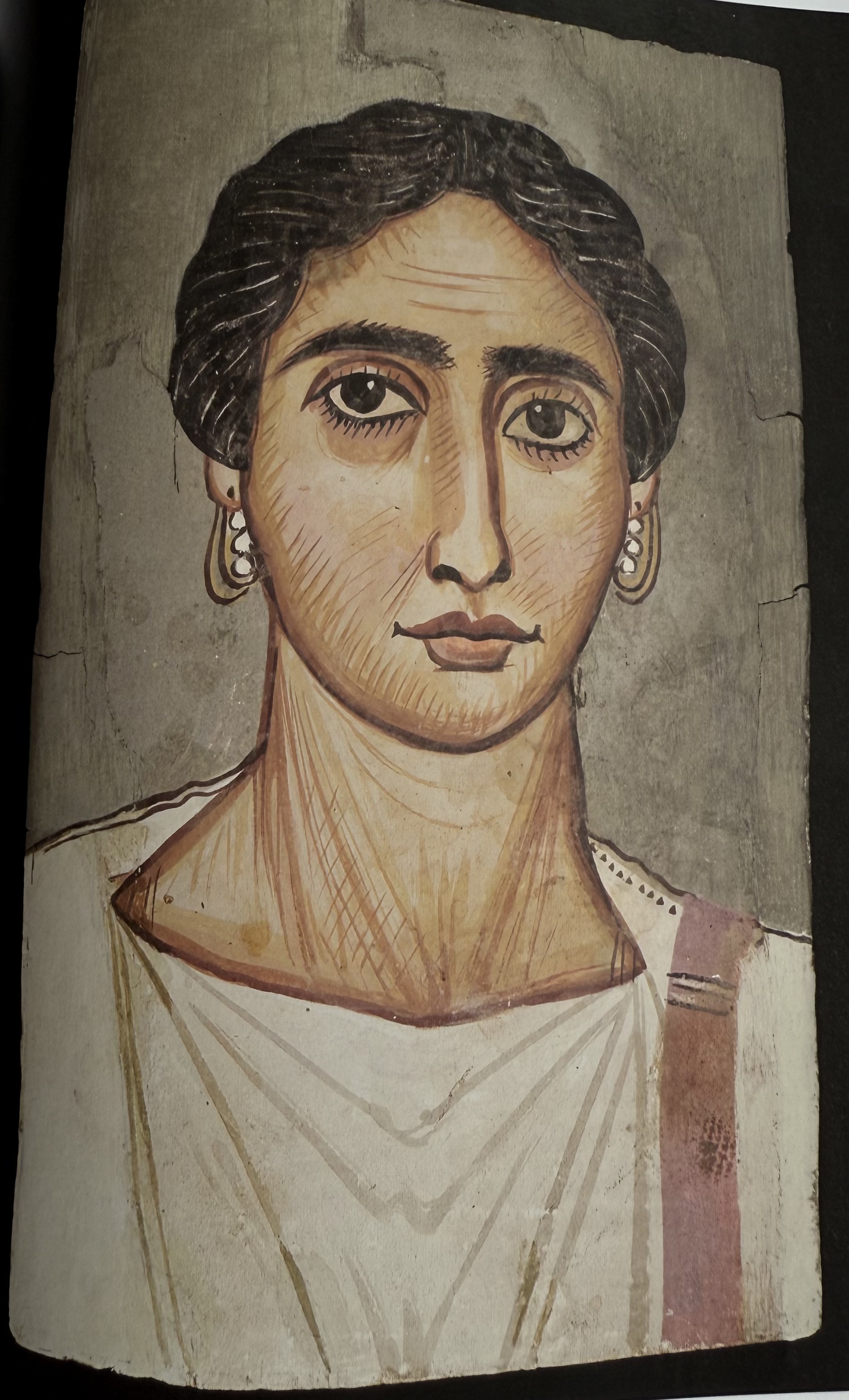
Funeral portrait of a woman. Fayum. Styles match those of the imperial family. Portraits show the deceased as youthful/middle age begging the question of when they are painted?
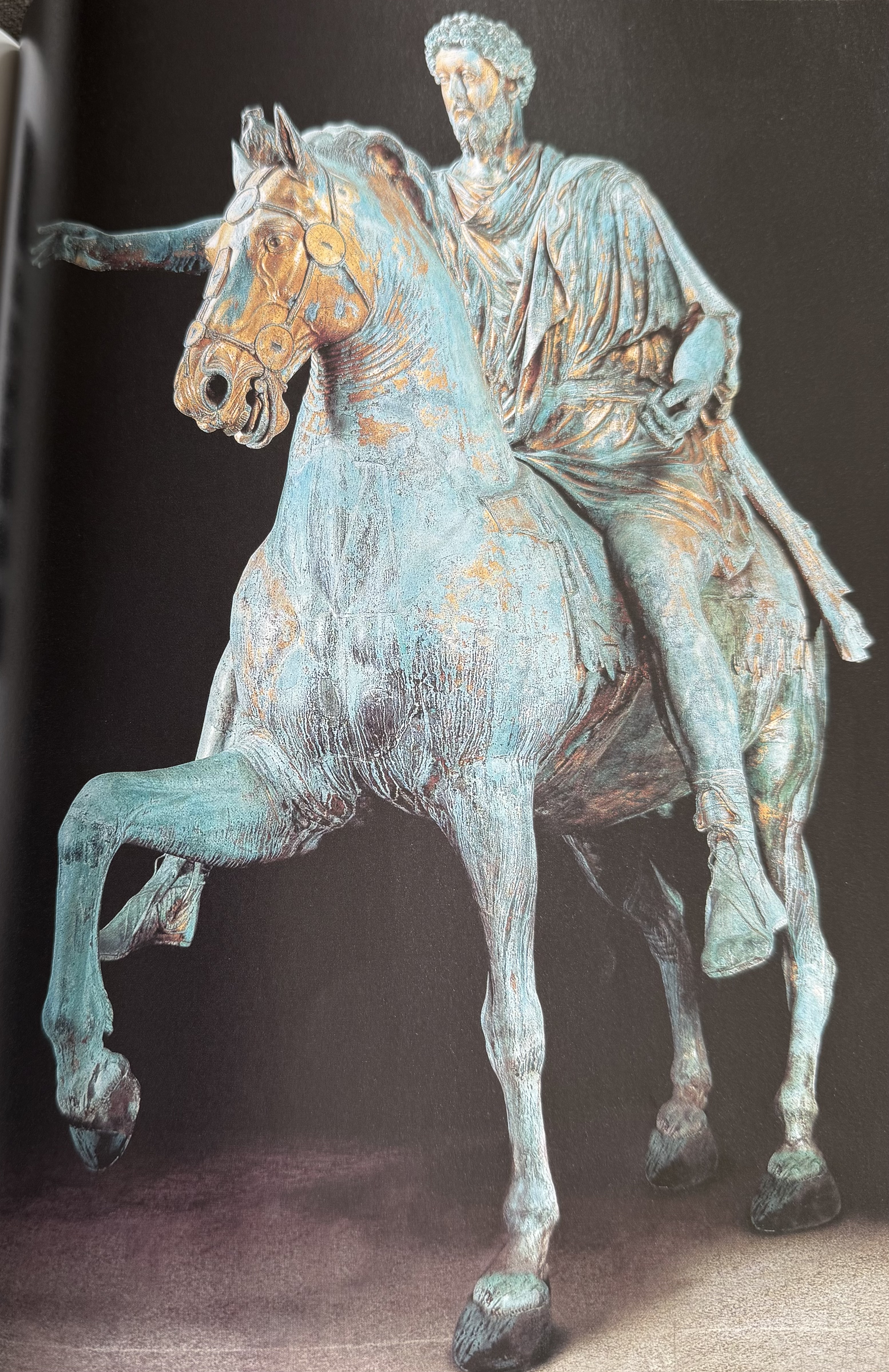
Marcus Aurelius on horseback. The only complete bronze equestrian to survive from antiquity. Thought to be a statue of Constantine. Showcases clementia.
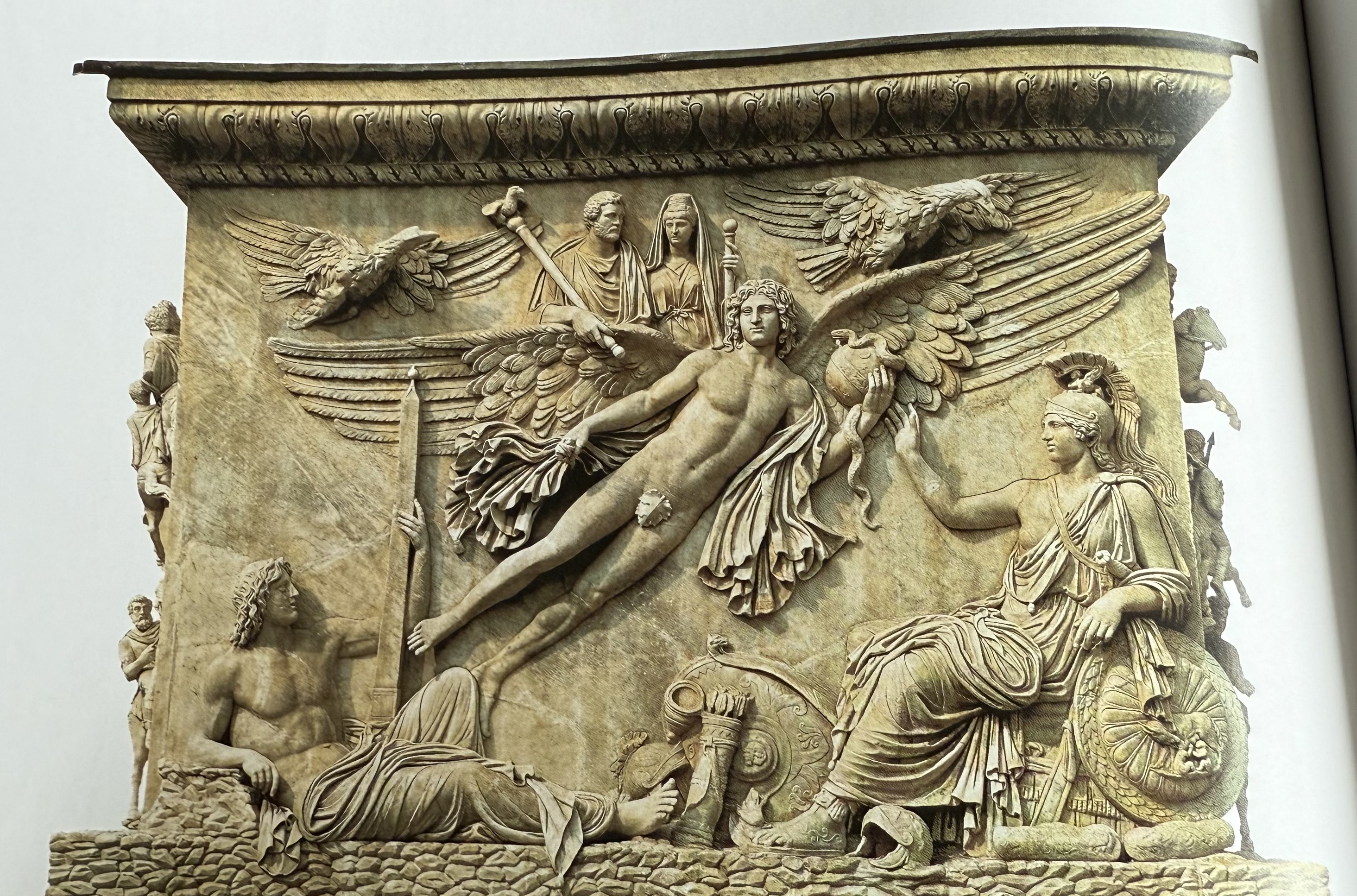
Apotheosis of Antonius and Faustina on Column of Antinuous Pius
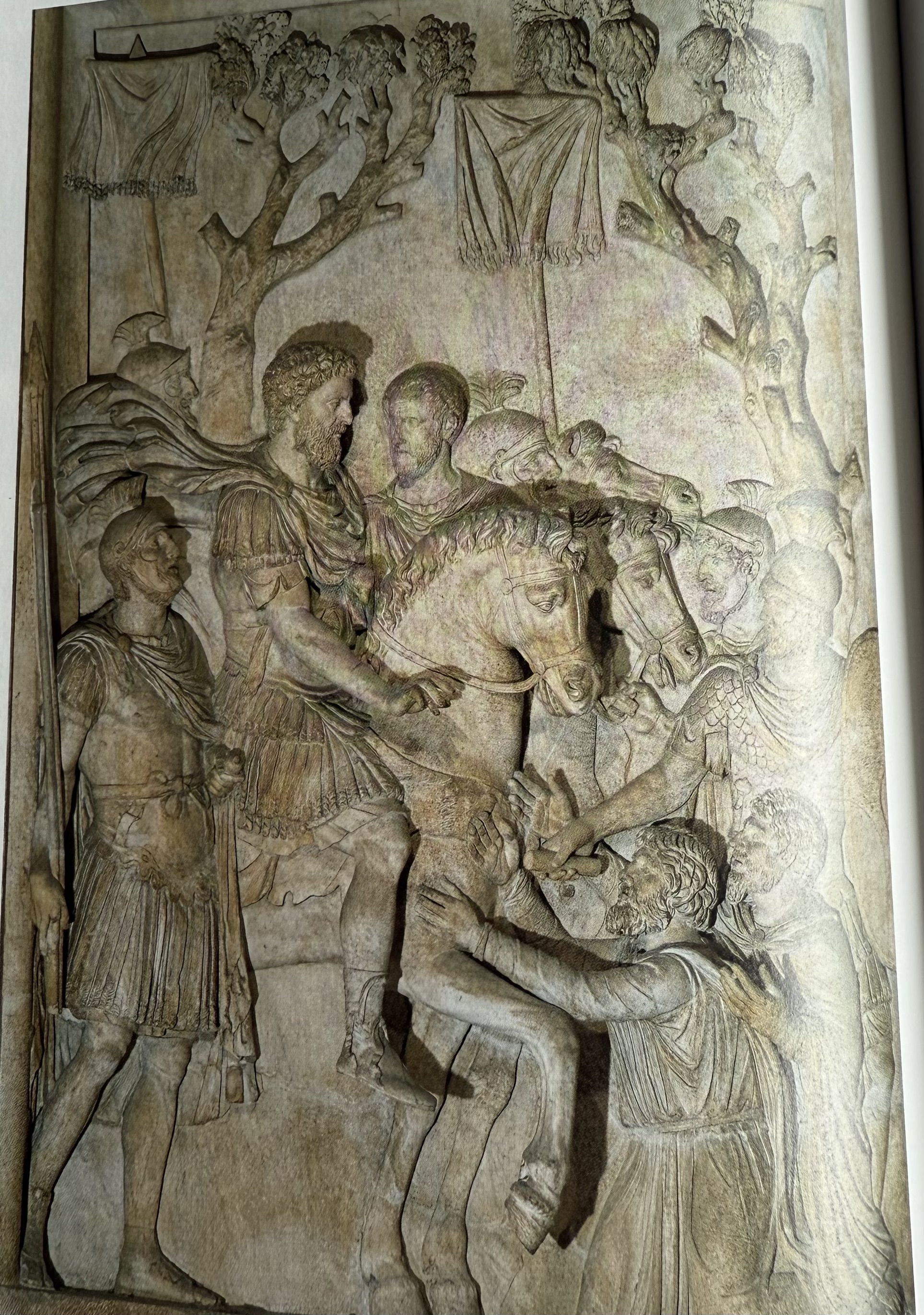
Submission of barbarians to Marcus Aurelius on Triumphal Arch. Same gesture as bronze statue (Clementia).
Three levels of reliefs from Column of Marcus Aurelius showing scenes from German wars. Shows brutality of war, but sympathizes with the defeated.
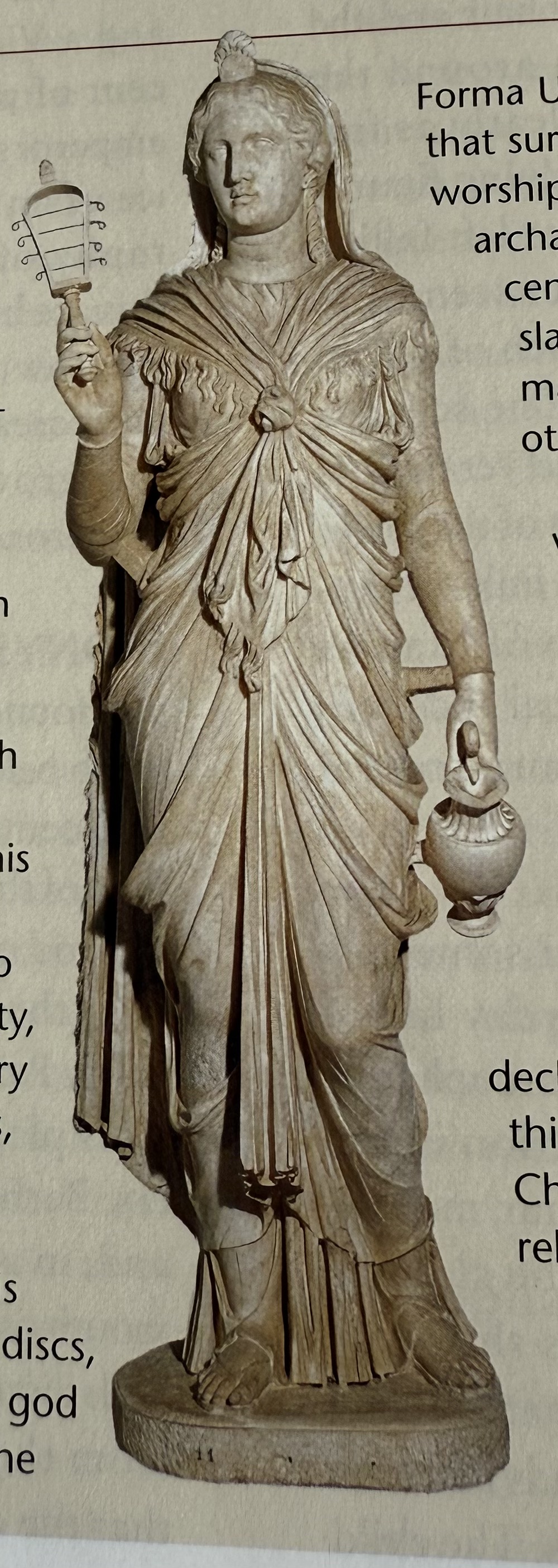
Isis, one of the foreign cults imported to rome. temple to Isis was found in Pompeii.
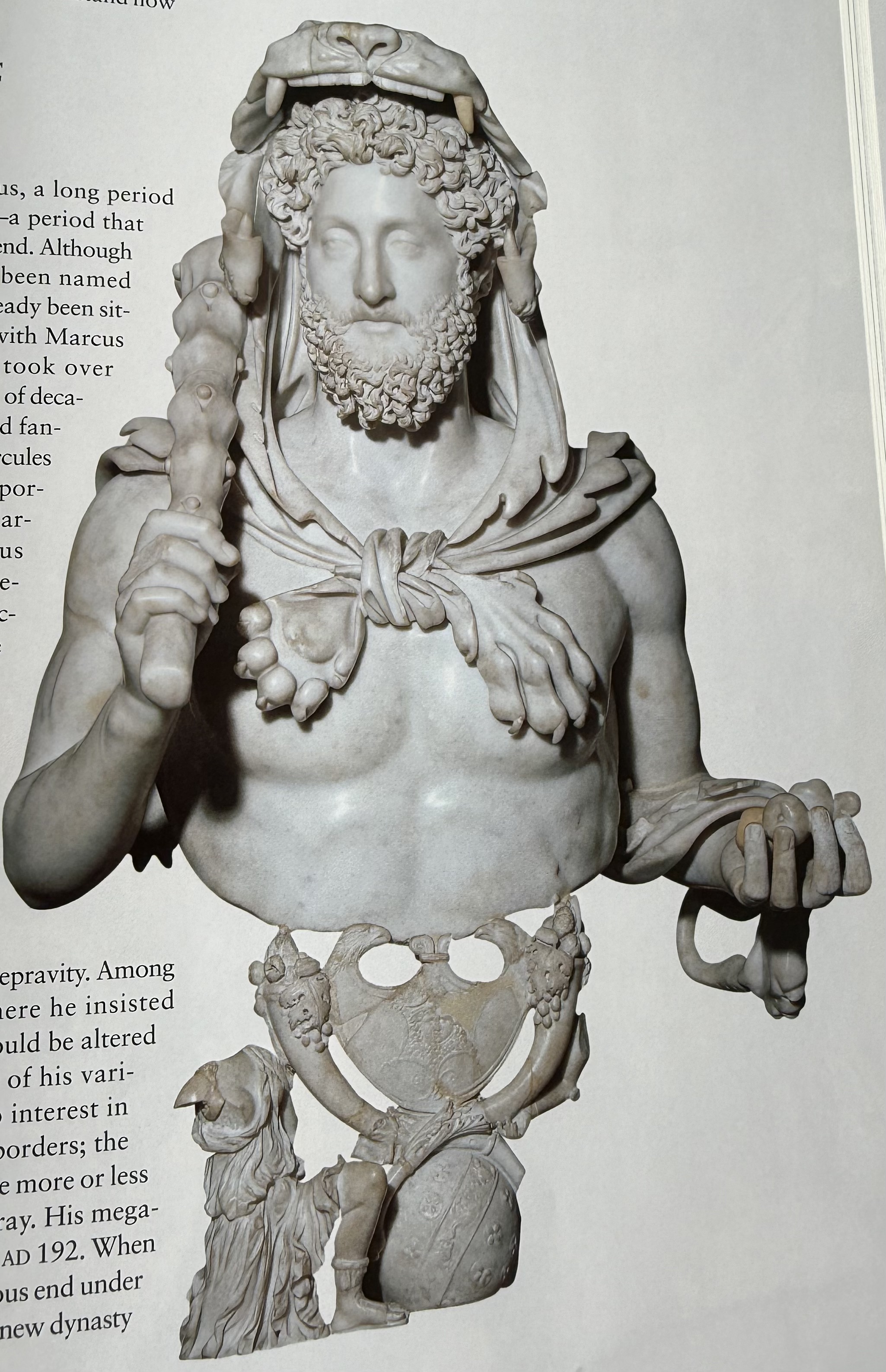
Bust of Commodus as Hercules. Commodus thought of himself as Hercules reincarnated.
Temple of Vespasian
Dedicated to deified Vespasian and Titus. Completed by Domitian. Only part of the corinthian columns can be seen.
Atrium
The central room in a roman house.
Shrine of the Augustales
A shrine to the imperial cult. Two marble statues of Titus and Vespasian were found here. Showcases how the Romans worshipped their emperors as if they were divine.
Giuseppe Fiorelli
Italian Archeologist who lead excavations at Pompeii. He came up with the idea to pour plaster into empty cavaties, which allowed archeologists to see exact replicas of those who died at pompeii.
Herculaneum
One of the towns burried when Mount Vesuvius errupted. This town is less excavated than the other town, Pompeii.
House of the Vetti
One of the finest houses in Pomepii. It was recently redecorated following the earthquake, and several painting featuring greek mythological scenes can be found here.
lararium
A shrine to the spirits that protected the family and insured health, wealth and male heirs. They were very common in Roman houses.
velarium
The awning drawn over an amphitheater as protection from the sun.
triclinium
A dining room.
apodyterium
The changing room or locker room found in the bath houses. They mirror similarly to what we have in public swimming pools.
damnatio memoriae
A decree of the Senate condemming someone’s behavior and ordering that all images of him and documentary references be destroyed or erased. This happens to Domitian.
Basilica Ulpia
Named for Trajans family. It would have been a part of the Forum of Trajan, a large space which gave private land taken during Neros’ reign back to the public.
testudo
The name given to an army formation where the Romans attacking a town put their sheilds together over their heads for protection against defenders on the walls.
Tropaeum Traiani
Also known as Trajans trophy. It was built in Dacian lands to celebrate trajans victory. It likely was built by local people in service of Rome.
alimenta
The custom of distributing food to the people, often at the personal expense of the emperor. A relief depicting this appears on the Arch of Trajan at Benevento
Timgad
A city in Algeria which served to settle veterans of the roman army. It survives incredibly well, as it is not by any major city and was not advantageous to look. Provides a very clear picture of what a Roman city would look like.
Segovia
Location of a large acquaduct built by Hadrian.
helical frieze
The pattern created when a decorated band of constant width is wound edge to edge continuously around a cylinder. The column of Trajan is an example of many helical friezes.
Hadrian’s Villa
A countryside villa which brought the comforts of Rome to the country. It was widely decorated with sculpture and art, and was architecturally designed by hadrian himself.
oculus
The round opening in a dome to let light in. The pantheon had an Oculus.
Baths of Neptune at Ostia
A public bath house at Ostia. It featured a large black and white floor mosaic of Neptune and other oceanic creatures.
Temple of Venus and Roma
An unusual temple built by Hadrian, which was dedciated to both Venus and Roma. The temple had many greek designs incorporated into the design, inlcuding columns which circled the whole temple.
Temple of Olympian Zeus at Athens
An 800 year old temple finally finished by Hadrian. Showcased Hadrian dedication to beautifying the provinces, and also his love of Greece and Athens.
insulae
A multiple dwelling in a roman town, usually encompassing a whole block. (High rise apartments that provided housing for many people in an urban area)
pietas
Piety or devotion. One of the major virtues expected of the emperor.
Hadrian’s Wall
A large wall built in the province of Britain. The large number of gates indicate that they were attempting to facilitate the movement of people. This goes along with Hadrian philosophy to maintain, NOT conquer.
Antinous
The lover of Hadrian. When he died, Hadrian went into deep mourning and has his lover deified and initiated the cult of Antinous. He is frequently depicted in the classical/hellenistic style.
Ephesus
A turkish city in which the Library of Celsus stands. The library features an Aediculated Columnar Facade, which has been almost fully reconstructed.
Temple of Antoninus Pius and Faustina
It was originally built by Antoninus to honor his wife. It was later dedicated to to the emperor himself following his death. It is an example of temple sharing, which commonly involved statues of the roman imperial family along with the gods.
Fayum
The egyptian city where the wooden portraits of the deceased are found. The portraits found are likely of elite Fayum families, and they are depicted as youthful or middle age.
encaustic
A painting technique where heated wax is used as a coloring and sealing medium. Seen on the portraits of the deceased at Fayum.
gilded bronze
Bronze which has been decorated with gold leaf. The bronze statue of Marcus Aurelius was original gilded bronze.
Column of Marcus Aurelius
Depicts the two campaigns conducted by Marcus Aurelius against the German tribes along the Danube. The column showcases the horror of war, but one surprising aspect is the level of sympathy shown towards the defeated.
Bacchus
The roman equivalent of Dionysus. Originally a foreign deity, his cult was brought to Rome. Sarcophagi with dionysiac themes are full of escapism.
clementia
Mercy to non romans. It is a similar pose to that of the adlocutio, and Marcus Aurelius is depicted giving clementia in several major works of art.
virtus
Courage or Strength. Another virtue expected of the emperor.
adlocutio
Formal speech, often given by the emperor to his troops. Sometimes used for the traditional stance, with one arm raised, associated with such a speech.
The Roman Architectural Revolution: Roman concrete and the revolution of architecture.
Apotheosis. How did the Roman represent apotheosis? Where and why? What did it look like?
The city of Pompeii: its range of building types and evidence for daily life
Funerary Culture: Death and Dying. What evidence do we have for how the Romans approached death?
Iconography of Victory: What types of monuments and decoration celebrate Roman victory?
Representations of women are found in many categories of Roman art (e.g., imperial portraits, funeral portraits, goddesses, personifications, etc.). What did they look like and what messages did they convey?